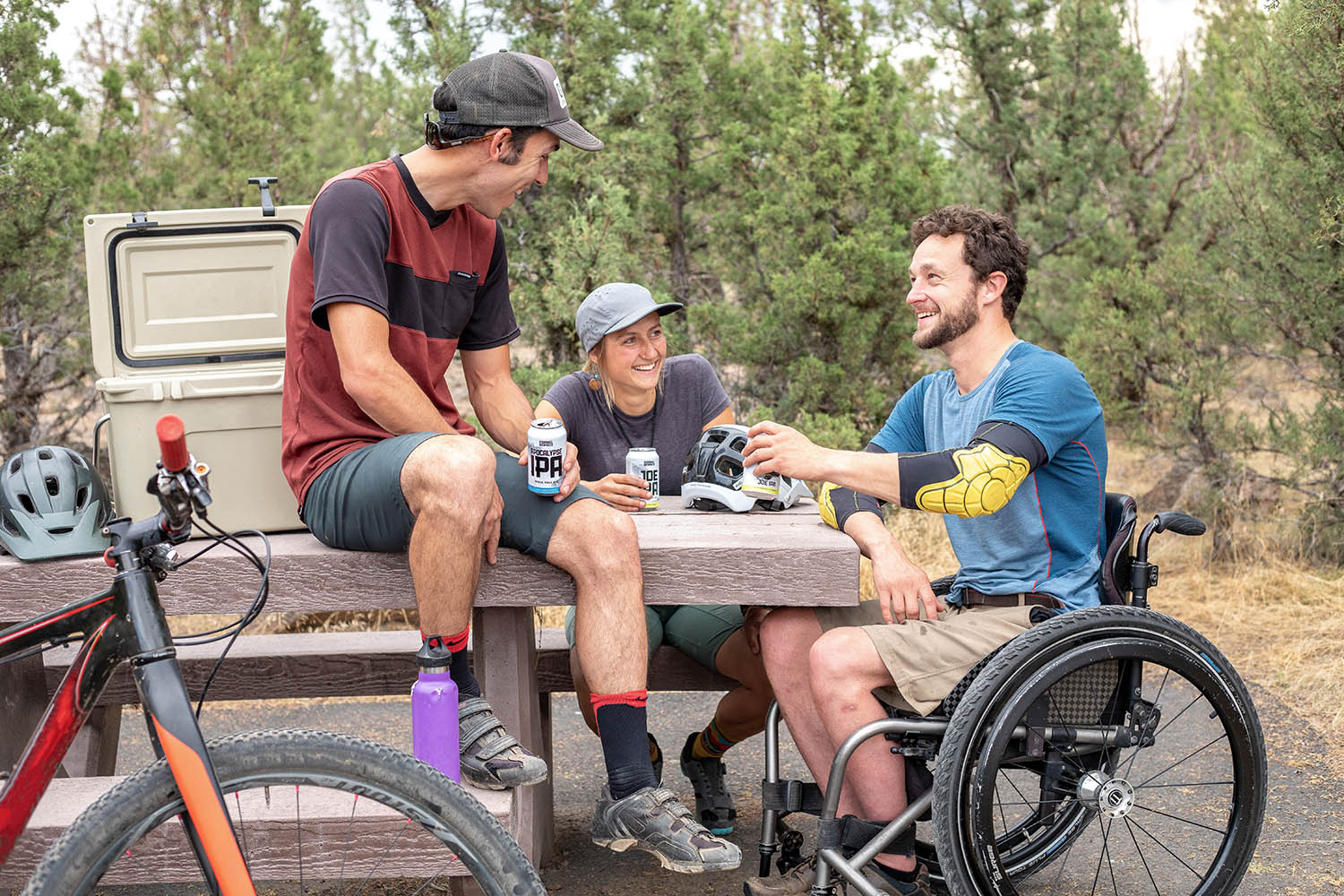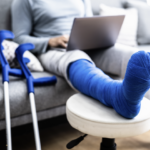This practical guide for setting goals for people with disabilities is designed to prepare adults for improving all aspects of their lives.
What comes to mind when you think about the next step in your life? If you agree that you want to build a more stable future, than you have to include looking and preparing for opportunity. Despite challenges you face and obstacles that may undermine your current situation, there are plenty of things you can explore, research, and try to create opportunities for success. It takes some time to evaluate yourself and your unique situation. But the time you spend figuring out your abilities and options for making progress towards your goals is a great investment toward improving your situation and moving towards the life you want.
The first step is to have a thorough understanding of where you are today and where you want to be. You can begin by taking an inventory of aspects of your life today and then identifying a goal that you would like to reach in that area. Some people like to do this type of personal inventory with a family member or friend. And that can be helpful in providing a reality check and in coming up with additional ideas you might not think of on your own. If you prefer to do this by yourself, that’s okay, too. For most people, writing down your inventory information, either on paper or a computer, makes it more real plus it allows you to review and evaluate it frequently to stay focused on your achievements.
While there are many different aspects of your life that can be inventoried, let’s start with a few that can help you understand the process and easily get started.
The examples below are samples that people have included in their personal inventory.
PERSONAL INVENTORY AS OF (DATE)
PHYSICAL INVENTORY
Today’s Physical Status: Physically tired, trouble sleeping/resting, unable to complete household tasks on a daily basis. Inability to exercise enough is making me gain weight.
Future Goals: I would like to improve strength and stamina, improve rest/sleep; add ability to complete more household tasks; manage my nutritional needs to keep my weight down.
Steps to Take Now
Discuss with doctor or therapist suggestions for improving physical strength
Learn about exercises you can work on to improve your physical stamina and strength (from your medical support or through research on your own. The Internet has lots of good resources. One that may help motivate you is the website for the National Center on Health, Physical Activity and Disability (NCHPAD), a public health promotion resource for people with disabilities.
You might want to check out their campaign to rebrand walking called How I Walk to see how their programs are designed and developed for an array of physical challenges as well as how you might participate.
Set up a routine to gradually increase practicing these exercises and monitor progress weekly
Monitor for two weeks your sleep and rest patterns to better understand how your body reacts and responds
Make a list of household tasks that need to be done. Divide the list into those tasks you can do now, those you think you might be able to work towards accomplishing, and those that you need accommodations or help with now. Under the second category, create a plan for how to break down a task into manageable chunks. For instance, if doing laundry feels overwhelming, identify the steps (sorting, washing, drying, folding/ironing/hanging up, putting away clean clothes) and the ones you can do now. There is no law that says all steps in doing laundry must be done within one time period. Think about how you can accomplish some or all of the tasks related to laundry on a time frame that works better for your physical ability right now.
If you are not as mobile as you’d been in the past, or if you have an illness that can be treated with a change in diet, ask your doctor or find a nutritionist to discuss best foods to help you get the nutrients you need while keeping your weight and/or illness in check until you are able to exercise effectively.
Of course, physical abilities can change on an hourly, daily, or yearly basis. Recognizing the physical abilities you have now as well as identifying those you think you can work on acquiring or improving is an evolving activity. The plan is to take a snapshot of your physical status on a frequent basis so you can review it to come up with an overview that is accurate.
SOCIAL INVENTORY
A somewhat more complex and varied inventory is a social inventory. There are a number of specific social inventories that trained psychologists and mental health counselors conduct with their clients. In this exercise, however, you will be conducting an informal inventory of your social status, including the network of people that are important to you as well as your connection to the community in which you live and wish to interact with.
Today’s Social Status: Feeling isolated, not sure what I can do to overcome loneliness, unable to feel connected to others.
Future Goals: I need to improve/repair my relationship with at least one of my neighbors; take the lead on connecting with family members; find a way to meet new people.
Steps to Take Now…
Individual connections
Consider how to approach a neighbor by writing a note, going to the neighbor’s house, or calling to invite someone for coffee, tea, or just a conversation. Set a date that you will connect with your neighbor.
Is there a friend from your past you have not talked to for a long time that you could call to reconnect your relationship? Get the contact information you have or new information if you need it and set a time for re-establishing contact.
When you encounter an individual you would like to get to know better, take the initial step of starting a conversation, smiling, and asking questions that show you are interested in learning more about him or her.
Group Connections
 Think about family members and how and when would be most convenient for them to connect with you, either by phone or for a face-to-face visit. Ask questions to find out what events might be planned in the family. If there is a family event, ask what you can do to help make it special.
Think about family members and how and when would be most convenient for them to connect with you, either by phone or for a face-to-face visit. Ask questions to find out what events might be planned in the family. If there is a family event, ask what you can do to help make it special.
Are there Internet groups you could join? Is there a community center nearby for people with similar interests or that offers classes or social events that you can either get to on your own or find transportation to get you there? Identify at least two interests you have that might have online groups that communicate or on-site classes or meetings you could attend. Join Facebook.com to help keep in touch and reconnect with friends, relatives and old schoolmates.
If you belong to a church or would like to attend, contact the church office to find out times of services and if there is transportation available if you need it.
Community Connections
Take an interest in what is going on in your community through the newspaper, television, or other media. Is there a problem in your community that people are working on to resolve that you could learn about? Do you know who the key leaders are in your community and what their role is in building, maintaining, and improving your community?
Identify one community concern that you are interested in (such as the schools, roads and transportation, services for seniors, new businesses or employment opportunities) and find out all you can about it so that you develop some expertise. When you become knowledgeable about a topic, it is easier to find ways to participate in improving a problem or concern, from attending meetings to volunteering to help make change. Participating in your community can give you insights about how to improve your life and the lives of your neighbors, including others who may also have disabilities.
If you have access to a personal computer and are able to navigate the web, the website MeetUp.com is established in many cities. It offers many groups meeting locally for a wide variety of interests. You can also start your own group and find others who will join you.
INTELLECTUAL/EDUCATIONAL INVENTORY
Today’s Intellectual Status: Feeling that I am being left behind because of not being competent with technology.
Future Goals: I would like to feel confident in using a computer to look up information and using technology tools that would be helpful to me.
Steps to Take Now
If you do not have a computer or easy access to a computer, schedule a trip to the library or a community center where free access to computers is available. A librarian is usually able to assist you with basic access. If you do have a computer available, write down at least five questions you have about how to use it or find things, such as how to use a database program to keep track of your expenses, how to find online groups you can join for discussion about topics of interest, or how to organize your photos so you can enjoy them easily. Ask family, neighbors, or friends for recommendations on how you can get computer help to answer your questions. Make it priority to get computer training this month.
Most cellphones and laptops have voice recognition capabilities. If you are not able to type, you may find these features very useful. Older models may require a microphone attachment.
As you add each new skill, plan additional ones so you can continue to develop your expertise with technology. This knowledge can help you in many different aspects of your life, including reaching your social, physical, educational, and financial goals.
FINANCIAL INVENTORY
Today’s Financial Status: I have a budget but am unable to meet all my financial obligations.
Future Goals: I would like to find ways to increase my income.
Steps to Take Now
Review the information from Social Security regarding employment for people receiving disability benefits. We will cover that in detail in an upcoming article.
Identify the types of work available in your area that might be a good match for you, based on your abilities, interests, and accommodations.
Make a list of other ways you might bring in more income, such as selling your stuff, finding a less expensive place to live, or adding a roommate to help share housing costs.
Investigate how you might add to your skills through education and training to improve your possibility of earning additional income in the future.
Are you ready to get started? Taking a current personal inventory including setting goals and creating an action plan to achieve them is a great way to evaluate your situation and begin making plans for your future. The examples here may not reflect exactly what your situation is today. But use them to customize your personal inventory to make progress towards your actual goals. When you are in the process of moving forward in these and other areas of your life, you are setting yourself up to be ready to take advantage of opportunities that come your way to enhance and improve the quality of your life.
By Jackie Booth, Ph.D.




